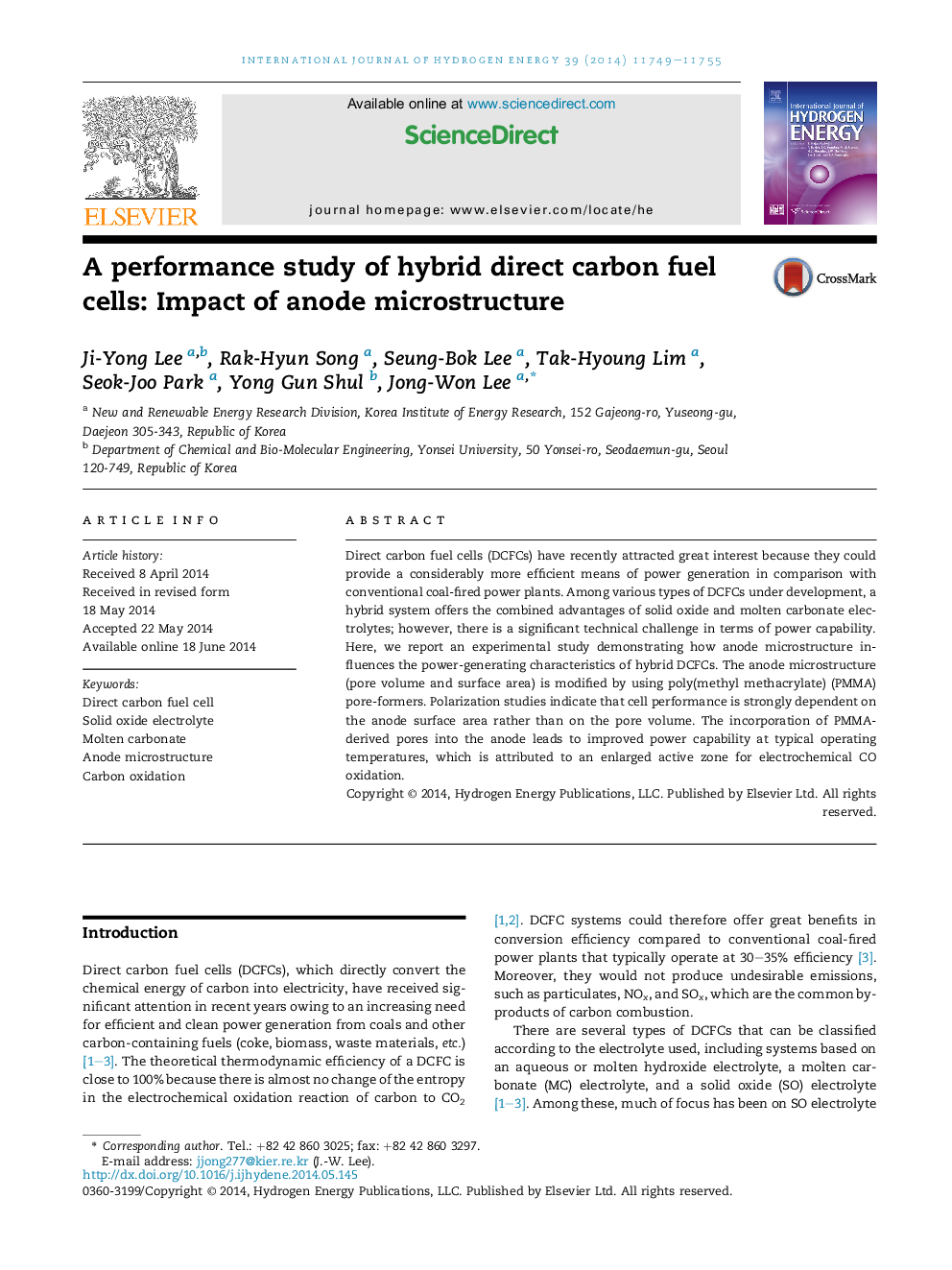| Article ID | Journal | Published Year | Pages | File Type |
|---|---|---|---|---|
| 1273196 | International Journal of Hydrogen Energy | 2014 | 7 Pages |
•Effect of anode surface area and pore volume on hybrid direct carbon fuel cells.•The anode microstructure is modified using poly(methyl methacrylate) pore-formers.•Fuel cells operate via direct carbon, CO32–-mediated, and CO oxidation reactions.•The anode surface area plays a dominant role in improving cell performance.•The improved performance is mainly due to an enlarged active zone for CO oxidation.
Direct carbon fuel cells (DCFCs) have recently attracted great interest because they could provide a considerably more efficient means of power generation in comparison with conventional coal-fired power plants. Among various types of DCFCs under development, a hybrid system offers the combined advantages of solid oxide and molten carbonate electrolytes; however, there is a significant technical challenge in terms of power capability. Here, we report an experimental study demonstrating how anode microstructure influences the power-generating characteristics of hybrid DCFCs. The anode microstructure (pore volume and surface area) is modified by using poly(methyl methacrylate) (PMMA) pore-formers. Polarization studies indicate that cell performance is strongly dependent on the anode surface area rather than on the pore volume. The incorporation of PMMA-derived pores into the anode leads to improved power capability at typical operating temperatures, which is attributed to an enlarged active zone for electrochemical CO oxidation.
